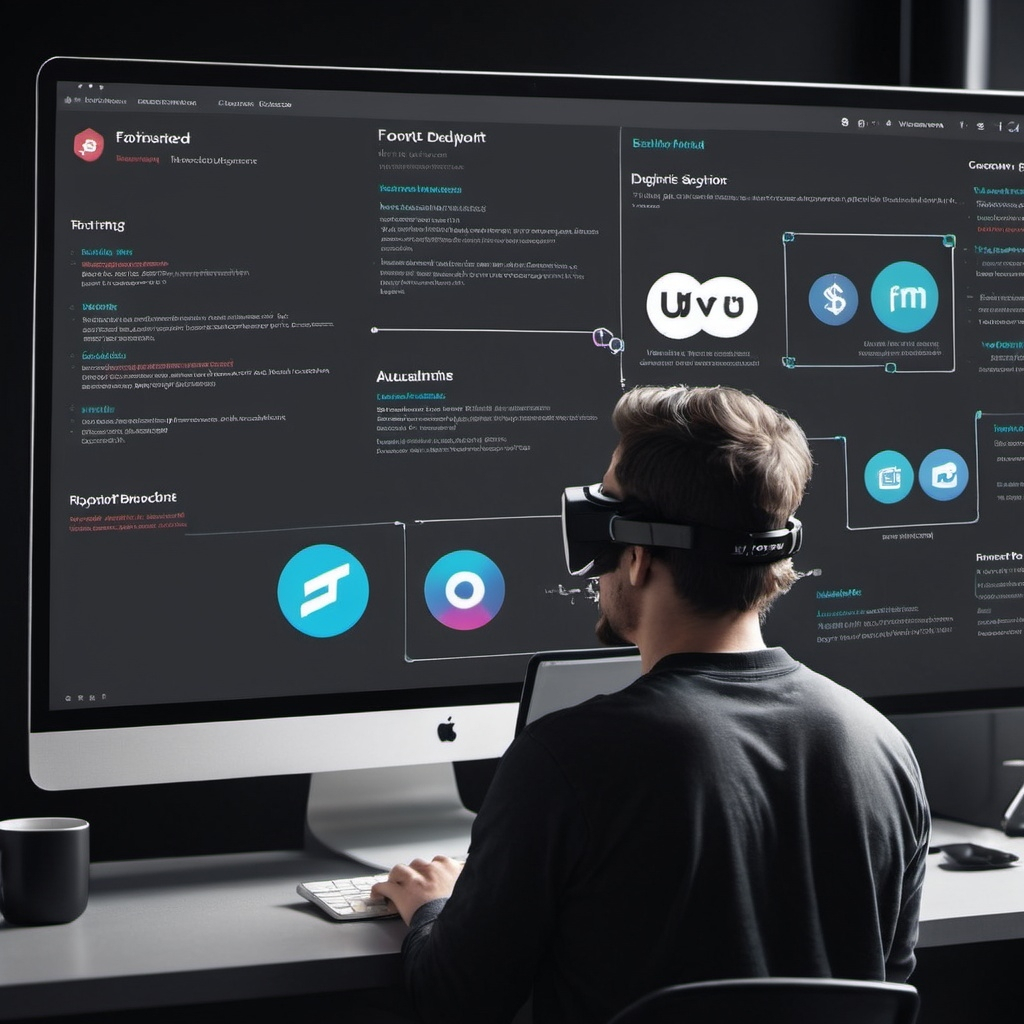Future Trends in Frontend Development: The rapid pace of innovation in this field demands constant vigilance and adaptability from developers and businesses alike. In this comprehensive exploration, we’ll uncover the key technologies and methodologies that are set to define the future of frontend development.
JavaScript: The Enduring Cornerstone of Frontend Development
Despite its venerable age in the tech world, JavaScript continues to reign supreme as the linchpin of frontend development. Its longevity is a testament to its adaptability and the vibrant community that constantly pushes its boundaries. As we look towards the horizon of 2024 and beyond, JavaScript’s dominance shows no signs of waning.
The language’s ecosystem is teeming with frameworks and libraries that cater to diverse development needs. React.js, Vue.js, and Angular remain at the forefront, each offering unique advantages for building dynamic and responsive user interfaces. However, the landscape is not static. Emerging contenders like Svelte and Solid.js are gaining traction, promising even more efficient and performant applications.
For the discerning frontend developer, mastering these tools is no longer optional—it’s imperative. The ability to leverage the right framework for the right project will be a distinguishing factor in the competitive job market. Moreover, the rise of TypeScript, a statically-typed superset of JavaScript, is adding another layer of robustness to frontend development practices, enhancing code quality and maintainability.
The Rise of Immersive Web Experiences: VR and AR Integration
The frontier of frontend development is expanding beyond traditional screens, venturing into the realms of Virtual Reality (VR) and Augmented Reality (AR). This paradigm shift is not just a fleeting trend but a fundamental change in how users interact with digital content.
Frameworks like A-Frame and Three.js are empowering developers to create immersive 3D experiences directly in the browser. These tools are democratizing VR and AR development, making it accessible to frontend developers without requiring specialized game engine knowledge.
As we progress, we can expect to see more sophisticated integrations of VR and AR in everyday web applications. From virtual product try-ons in e-commerce to interactive data visualizations in business applications, the possibilities are boundless. Frontend developers who can bridge the gap between traditional web development and these immersive technologies will be in high demand.
Micro Frontends: Scaling Development for the Enterprise
The concept of micro frontends is gaining significant traction, especially in large-scale enterprise applications. This architectural approach extends the principles of microservices to the frontend, allowing teams to develop, test, and deploy UI components independently.
Implementing micro frontends requires a shift in thinking about application structure. It involves breaking down monolithic frontend codebases into smaller, more manageable pieces. Tools like single-spa and Webpack 5 Module Federation are facilitating this transition, enabling seamless integration of disparate frontend modules.
The benefits of micro frontends are manifold. They promote code reusability, enable faster development cycles, and allow for more flexible team structures. As organizations continue to scale their digital products, proficiency in micro frontend architecture will become an invaluable skill for frontend developers.
AI-Driven Development: The New Frontier
Artificial Intelligence is not just a buzzword in frontend development; it’s becoming an integral part of the development process itself. AI-powered tools are revolutionizing how we approach UI/UX design, code generation, and even bug detection.
Platforms like Figma are incorporating AI to assist in design ideation and prototyping. Meanwhile, GitHub Copilot and similar AI pair programmers are changing the way developers write code, offering intelligent suggestions and automating repetitive tasks.
The integration of AI in frontend development tools is set to dramatically increase productivity and creativity. Developers who can effectively leverage these AI assistants while maintaining critical thinking and problem-solving skills will be at a significant advantage in the evolving job market.
Progressive Web Apps: Bridging the Gap Between Web and Native
Progressive Web Apps (PWAs) continue to blur the lines between web and native applications, offering a compelling alternative to traditional mobile app development. As browser capabilities expand and mobile devices become more powerful, PWAs are becoming increasingly sophisticated.
The adoption of PWAs is driven by their ability to provide app-like experiences without the friction of app store downloads. They offer offline functionality, push notifications, and hardware access, all while maintaining the accessibility of web applications.
Frameworks like Workbox and libraries such as localForage are making it easier than ever to build robust PWAs. As more businesses recognize the potential of PWAs to reach wider audiences and reduce development costs, expertise in this area will be highly sought after in the frontend development community.
Embracing the Future of Frontend Development
As we stand on the cusp of a new era in frontend development, the opportunities for innovation and growth are boundless. The trends we’ve explored—from the evolution of JavaScript to the integration of AI and immersive technologies—are just the beginning. The future belongs to those who can adapt, learn, and push the boundaries of what’s possible on the web.
For developers looking to stay ahead of the curve, continuous learning and experimentation are key. Engaging with open-source projects, participating in hackathons, and contributing to the developer community are excellent ways to hone skills and stay informed about emerging trends.
As we conclude this exploration of the future of frontend development, it’s clear that the field is more dynamic and exciting than ever. Whether you’re a seasoned developer or just starting your journey, the path ahead is filled with opportunities to create, innovate, and shape the digital experiences of tomorrow.

Explore TechTalent: Elevate Your Tech Career
Ready to take your interactive walkthrough skills to the next level?
TechTalent offers opportunities to certify your skills, connect with global tech professionals, and explore interactive design and development.
Join today and be part of shaping the future of interactive walkthroughs!
